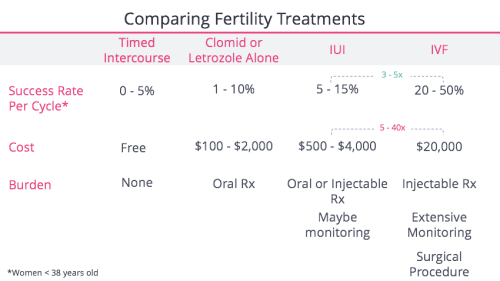Will Insurance Cover IVF? Your Guide to Understanding Coverage, Costs, and Options
In vitro fertilization (IVF) is a life-changing option for many people dreaming of starting a family. But with costs often soaring into the tens of thousands of dollars, one question looms large: will insurance cover it? If you’re navigating this journey, you’re not alone—millions of Americans face the same uncertainty every year. The good news? Coverage is evolving, and there are ways to make IVF more affordable, even if your insurance doesn’t fully step up. This guide dives deep into the world of IVF insurance coverage, breaking down what you need to know, what’s changing in 2025, and how to maximize your options.
What Is IVF and Why Does Coverage Matter?
IVF is a fertility treatment where eggs are retrieved from the ovaries, fertilized with sperm in a lab, and then transferred into the uterus. It’s a beacon of hope for people facing infertility—about 1 in 8 couples in the U.S.—as well as single parents and LGBTQ+ individuals building families. But here’s the catch: a single IVF cycle can cost between $12,000 and $30,000, depending on medications, testing, and clinic fees. For many, that’s a huge financial hurdle.
Insurance coverage can make or break access to IVF. When it’s covered, out-of-pocket costs drop significantly, sometimes to just a few thousand dollars. Without it, you’re left footing the entire bill, which can feel overwhelming. So, understanding your insurance—and what’s possible beyond it—is key to turning your family-building dreams into reality.

Does Insurance Typically Cover IVF?
The short answer? It depends. Insurance coverage for IVF varies wildly based on where you live, your employer, and your specific plan. In the U.S., there’s no federal law requiring insurance to cover fertility treatments, so it’s a patchwork system. Some states step in with mandates, while others leave it up to insurers or employers. Here’s the breakdown:
- Nationwide Trends: Only about 25% of employer-sponsored health plans in the U.S. offer some IVF coverage, according to a 2024 Mercer survey. That leaves most people without help unless they live in a state with specific laws.
- State Mandates: As of April 2025, 21 states and Washington, D.C., have laws requiring some level of infertility coverage. But only 15 explicitly include IVF. States like California, New York, and Massachusetts lead the charge, while others, like Florida and Alabama, offer little to no protection.
- Private Plans: Even in states without mandates, some insurers or employers voluntarily cover IVF to attract talent in competitive job markets. Tech giants like Google and Amazon, for example, often include it in their benefits packages.
If you’re wondering about your own plan, check your policy’s “Summary of Benefits” or call your insurer. Look for terms like “infertility treatment,” “assisted reproductive technology,” or “IVF” to see what’s included.
How State Laws Shape IVF Coverage
Where you live can be a game-changer for IVF coverage. State mandates are the biggest driver, but they’re not all created equal. Let’s explore how they work and what they mean for you.
States with Comprehensive IVF Coverage
In 15 states, insurance plans must cover IVF under certain conditions. Here’s a snapshot of some standouts in 2025:
- California: A new law, signed in September 2024, requires most private insurers to cover IVF starting July 2025. It also expands the definition of infertility to include same-sex couples and single individuals, making it one of the most inclusive policies yet.
- Massachusetts: One of the pioneers, this state mandates unlimited IVF cycles for fully insured plans, with no lifetime cap. It’s a gold standard, but self-insured plans (common with big employers) are exempt.
- New York: Covers three IVF cycles for large group plans (over 100 employees) and includes fertility preservation for medical reasons, like cancer treatment.
States with Partial or No Coverage
In states without mandates—like Texas, Georgia, or Arizona—IVF coverage is rare unless your employer opts in. Even in mandate states, loopholes exist:
- Self-Insured Plans: About 61% of workers are on these plans, which are regulated federally and exempt from state laws. If your employer self-funds, they decide what’s covered.
- Small Businesses: Many mandates only apply to companies with 50+ employees, leaving smaller firms out.
A Quick Look at Coverage by State
| State | IVF Coverage? | Key Details |
|---|---|---|
| California | Yes | Mandatory as of July 2025, inclusive |
| Massachusetts | Yes | Unlimited cycles, fully insured only |
| Texas | No | No mandate, employer-dependent |
| New York | Yes | 3 cycles, large groups only |
| Florida | No | No state requirement |
Want to know your state’s status? The nonprofit RESOLVE tracks infertility laws—check their site for the latest.
What’s Covered When Insurance Says Yes?
Even when IVF is covered, it’s not a blank check. Policies differ in scope, so here’s what you might expect:
- Full Coverage: Includes egg retrieval, fertilization, embryo transfer, and sometimes medications. Rare, but possible in states like Massachusetts.
- Partial Coverage: Might cover diagnostics (like blood tests or ultrasounds) and a set number of cycles (e.g., 1-3), but not extras like genetic testing or donor eggs.
- Medication Only: Some plans cover fertility drugs (which can cost $3,000-$7,000 per cycle) but not the procedure itself.
Common Exclusions
✔️ Genetic Testing: Preimplantation genetic testing (PGT) to screen embryos often isn’t covered.
❌ Donor Eggs/Sperm: These can add $5,000-$15,000 and are rarely included.
✔️ Storage Fees: Freezing embryos or eggs might be out-of-pocket after a set time.
Real-life example: Sarah, a 34-year-old teacher in New Jersey, had insurance that covered two IVF cycles. Her $2,500 out-of-pocket cost per cycle was a fraction of the $18,000 total, thanks to her state’s mandate. But when she needed a third cycle, she paid full price.
The Cost Breakdown: With and Without Insurance
To grasp why coverage matters, let’s compare costs:
| Expense | With Insurance (Typical) | Without Insurance |
|---|---|---|
| IVF Cycle | $2,000-$5,000 | $12,000-$20,000 |
| Medications | $500-$2,000 | $3,000-$7,000 |
| Genetic Testing | Not covered | $3,000-$5,000 |
| Embryo Freezing | $500-$1,000 (1 year) | $1,000-$2,000 |
| Total (1 Cycle) | $3,000-$8,000 | $19,000-$34,000 |
Without coverage, costs balloon fast—especially if multiple cycles are needed, which is common (the average is 2.5 cycles for success).




